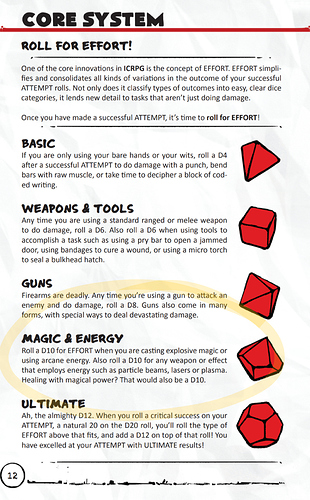Hello Great Community.
disclaimer: I’m not a native english speaker. Any insult to english grammar or orthograph is unintended.
I’m reading ICRPG-ME right now, and I’m a bit confused about initiative and turns (page 85). As I understand it, all PC opponents will act at GM turn. Therefore, what is the relevance of table seating? Just have a “player turn” and let them choose their initiative order and adjust their strategy as they see fit.
I can pretty well imagine how the round will go with my group if we use the example seating of p85:
- Tank Brothers’s turn: “let’s charge forward to control the battlefield!”
- Thief’s turn: “I sneak arround to take out that high value target.”
-
Mage’s turn: rains fire on the battlefield (
roll critical), probably taking out ennemy frontline, high value target, and thief. - Thief: “…”
- Tank Brothers and Cleric: “LOL!”
- GM: slow clap… “Well done, Mage.”
- Cleric’s turn: “too bad I can’t resurrect BBQ’ed meat. I charge forward.”
So at end of turn, we have:
- Tanks Brothers that wonder where the frontline has gone.
- An awkward Mage.
- a small appalled heap of ashes with protuding lockpicks (obviously a great loot).
- a Cleric holding the front line.
If sticking to the table order rule, I really think that the right order should be the opposite:
- After the GM turn, Cleric can either heal a near dead party member, cure a DoT before it can proc, or cast a buff for the whole party.
- Then Mage can cast AoE without friendly fire risk.
- Then Thief can strategically stab whatever remaining target that needs a good backstabbing.
- Then Tank Brothers can charge forward to contain the frontline. By the way, playing tanks last is the best way to control the battlefield at first turn, whoever goes first after the initiative roll.
Did I miss something?





